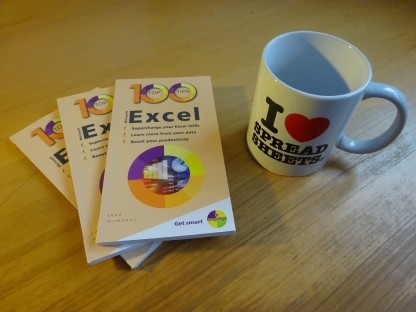
100 Top Tips: Microsoft Excel
Power up your Microsoft Excel skills with this powerful pocket-sized book of tips that will save you time and help you learn more from your spreadsheets.
12 November 2025
 The current issue of the Official Raspberry Pi Magazine includes my interview with inventor Grant Sinclair about his handheld GamerCard device. It's based on the Raspberry Pi Zero 2 W, so it can run a wide range of software, including PICO-8 and classic computer emulators. There are two four-button controllers under the pads on the front of the device.
The current issue of the Official Raspberry Pi Magazine includes my interview with inventor Grant Sinclair about his handheld GamerCard device. It's based on the Raspberry Pi Zero 2 W, so it can run a wide range of software, including PICO-8 and classic computer emulators. There are two four-button controllers under the pads on the front of the device.
Grant's vision is for GamerCard to be used not just for gaming but also for coding. He's incorporated Qwiic connectors so that users can access the GPIO pins to expand the device and schools can ensure that the devices remain reusable. He said some schools had Arduino or Raspberry Pi devices that they couldn't reuse because projects had been soldered on to them.
Grant is the nephew of Clive Sinclair, who gave us the ZX-81 and ZX Spectrum home computers. In the same way that those machines brought a mixture of gaming and coding into homes, Grant's new device puts those capabilities in the palm of your hand. I can imagine myself packing a small keyboard and a GamerCard for coding on long train or plane journeys.
I interviewed Grant in the bar of a fancy hotel in London on a sunny day. Most of the surfaces were mirrored or glass and the sun was streaming through the windows. I'm especially pleased at how well the photos came out in those circumstances. I used a red padded wall and a stripy rug as backdrops, and angled the camera and device carefully to minimise reflections.
Below you can see one of Grant's videos of the GamerCard, showing the Nintendo Switch games BlooKid2 and AstroBlaze which have been ported to the GamerCard.
The Official Raspberry Pi Magazine, formerly known as The MagPi, is available in newsagents including TG Jones, formerly known as WH Smiths. Why not buy a copy while listening to The Artist Formerly Known as Prince? You can also order online here.
While you're here, why not read my Raspberry Pi articles, Scratch tutorials, or get my free Coding Compendium ebook?
Permanent link for this post | Blog Home | Website Home | Email feedback
01 October 2025
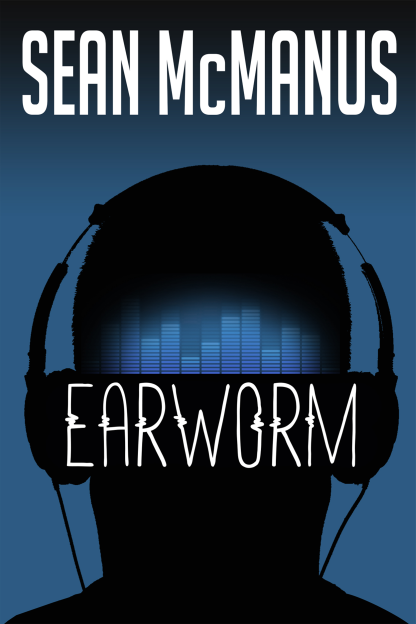 My novel for adults Earworm is now available in a 10th Anniversary Edition.
My novel for adults Earworm is now available in a 10th Anniversary Edition.
In the book, a record company plans to replace pop stars with music-generating technology, and comes under fire from ageing rocker Dove and two of his most devoted fans.
It's never been more topical: The Velvet Sundown recently achieved a million streams on Spotify before they were rumbled as being an AI band. Streaming service Deezer reported this month that it is receiving more than 30,000 fully AI-generated tracks every day, more than 28% of new music uploaded. When I tried using AI to make music, I was struck by how convincing it was. Play my EP Songs About Coding here.
Earworm was first published under the title University of Death in 2007, named after the band at the centre of the action. When I published it on Kindle in 2015, I made some small edits, commissioned a new cover and changed the title to Earworm.
Music magazines have reviewed the book positively, saying it's smart, fast moving and funny. The latest review is in this month's Blitzed magazine (issue 22). They said: "Given that it was first published in 2007, Earworm is really prophetic. Who would have thought that computers could write entire songs in just a few seconds? I really enjoyed Earworm and the Extras section at the end is very interesting too. There are several laugh-out-loud moments. Highly recommended."
The extras section has been enhanced with 101 free band names, taken from the source Jonathan identifies in the story, and a new Afterword. There are two deleted scenes (only one on Kindle for technical reasons), and I updated the Poptastic Trivia, too, which often surprises readers by showing how much of the book was inspired by real life.
It was a delight to read it afresh after so long and to be reunited with the characters from the book, with whom I spent a couple of years during drafting. I wasn't sure how I would feel about the book looking back on it now, but I was pleased with the characterisation and the way it all fits together like a jigsaw. I would find myself wondering why I had put a particular scene or detail in, only to rediscover its role in the plot later on.
Earworm is out now in print and on Kindle. It makes a great gift for the music lover in your life. Find out more, get a free PDF sampler of Earworm and buy your copy here.
Permanent link for this post | Blog Home | Website Home | Email feedback
29 September 2025
I had two new BBC articles published during the school summer holidays:
I've recently redesigned my articles page to make it easier to navigate and to reduce its carbon footprint by cutting the number of images. I hope you like the new streamlined design.
Permanent link for this post | Blog Home | Website Home | Email feedback
10 September 2025
I was taking a photo of a dinosaur fossil sculpture in the street, when three kids rushed up to it, followed by their Mum. "Did you know there's a felt chip shop around the corner?" I asked. "Like, a chip shop made of textiles."
"You mean the Bourdon Street Chippy?" she said. "We came past that. We thought it was real."
It is utterly convincing at first glance, and wonderful for kids and adults alike. I had visited earlier and felt joyful to be immersed in such a fun and surprising artwork.
The food on the table, signs and pictures on the wall are all crafted in textiles
Artist Lucy Sparrow and her team have recreated a dine-in and takeaway chip shop, with tables set with plates of food. The fish, sauce bottles and celebrity photos on the wall have all been created in textiles in brilliant detail. In the room next door is a hot food cabinet, filled with fish, sausages, mushy peas, and pies. The front of the cabinet displays a stitched poster for a circus. Behind the counter is a jar of onions, pickles and eggs underneath a neon takeaway sign. All the the food, down to the individual chips, has a cute face, with black beads for eyes.
Artist Lucy Sparrow at the chip shop, where she serves up felt fish and chips to customers
Like Lucy Sparrow's previous installations (including the Cornershop in 2014 and the Bourdon Street Chemist in 2021), everything is for sale. It's art, so it'll cost a bit more than your local chippy. A large cod and chips meal is £450. However, prices start at £5 for a sauce sachet, so everyone can join in fully and own a part of the installation. On my desk there is now an onion, with big beady eyes and a satisfied smile, catching the light in its gold thread. When you order, Lucy or one of her assistants serves your food. She picked up my onion with felt-covered tongs and carefully put it into a paper bag before ringing it up on the card reader. It's strange to be in a place so fantastical, that is nonetheless a real functioning shop.
The installation took Lucy and her six assistants eight weeks to create and has taken over the Lyndsey Ingram art gallery in London.
When I visited, Lucy proudly pointed out her award on the counter from the National Fish and Chip Awards. It was for the most heartfelt chip shop opening.
The installation runs for six weeks until 14 September 2025, open Wednesday to Sunday from 11am to 6pm. Photos by Sean McManus. Please ask if you want to reuse them.
The food has cute faces on it, like these friendly pies
Condiment bottles, also made from textiles
Permanent link for this post | Blog Home | Website Home | Email feedback
04 February 2025
 Artificial intelligence (AI) is a valuable productivity tool for many jobs now. I've written previously about how AI can negotiate contracts and help with programming, but people are increasingly bringing their own AI tools, such as ChatGPT, into the workplace without permission. According to a Software AG survey, half of knowledge workers use personal AI tools. Unauthorised AI tools are sometimes called "shadow AI", a more specific version of "shadow IT", which is the term used for unauthorised IT.
Artificial intelligence (AI) is a valuable productivity tool for many jobs now. I've written previously about how AI can negotiate contracts and help with programming, but people are increasingly bringing their own AI tools, such as ChatGPT, into the workplace without permission. According to a Software AG survey, half of knowledge workers use personal AI tools. Unauthorised AI tools are sometimes called "shadow AI", a more specific version of "shadow IT", which is the term used for unauthorised IT.
For my latest article for the BBC's Technology of Businesss, two people told me why they use shadow AI, on condition of anonymity. The article also looks at the risks of unauthorised AI and showcases Trimble's solution to shadow AI, which was to create its own general-purpose AI tool for its people to use.
The article was given the top feature slot on the BBC News homepage, and was followed up by the Business Matters programme on the BBC World Service. Read it here: Why employees smuggle AI into work.
To be updated when I write articles like this in the future, please susbcribe to my newsletter. Thank you to everyone to helped with the article, especially my two interviewees who shared their experiences anonymously.
Photo credit: Steve Johnson at Unsplash
Permanent link for this post | Blog Home | Website Home | Email feedback
09 January 2025
When I first saw the Lego Retro Radio set (10334), I wondered whether I could get it to play my own music by putting a Raspberry Pi inside it. The Lego designer included a grip for mounting your phone inside, but I wanted something that could interact with the tuning dial on the radio, and that I could leave in the radio permanently.
The Lego set features a sound brick, which has a button in it. When the button is pressed, it plays a short sound snippet, including some funny adverts and DJ quotes. The sound brick is triggered by turning the tuning dial. The key to making my project work was designing a replacement sound brick, which I could connect to the Raspberry Pi.
Now, when the tuning knob is turned, it activates my button, and a Python program reacts to the button press by changing the music playing.
To make it easy for others to use, I created the simplest program I could, which just plays songs and jingles alternately. However, it would be possible to make a more complex program using my Raspberry Radio code as a starting point. This uses text-to-speech to introduce each track, and indexes your music so you don't have to put the filenames in the code. It would be possible to have the button press change channel by switching between different song lists, and perhaps even changing the DJ's accent. Another cool addition would be to give each channel a name which is announced when it starts playing.
I've configured the Raspberry Pi so that my Python program starts running when the device is powered up. Inside the radio, I included another button which can be used to initiate a safe shutdown, without risk of damanging the micro SD card used for storage.
See my build instructions for playing your own music on the Lego Retro Radio using a Raspberry Pi.
Permanent link for this post | Blog Home | Website Home | Email feedback
03 December 2024
 I've published a new free ebook called Retro Compendium, which collects together the articles I've written about the Amstrad CPC, Spectrum and other retro computers.
I've published a new free ebook called Retro Compendium, which collects together the articles I've written about the Amstrad CPC, Spectrum and other retro computers.
Most of the articles were previously published in Amtix CPC magazine, which ran from 2021 to 2024. They include my investigation into whether ChatGPT could write Amstrad games, a run-down of pop music recreated in Amstrad games, and a report on the messages programmers hid in their Spectrum game code. Showing my love for magazines like Amstrad Action (AA), the ebook also includes a round-up of Christmas cover tapes from AA, and a short history of the Amstrad as seen through the final issues of the popular UK magazines.
There are game reviews, too, of Cassette 50, Get Dexter, Highway Encounter, Split Personalities (also known as Splitting Images), and Finders Keepers.
I've also compiled my listings, mostly originally published in Amstrad Action and Amstrad Computer User magazines, and have written an article about how I got them published. I don't expect anyone is typing them in in 2024, but listings were a big part of the CPC scene. Most of the games you can now play in your browser, or you can download my Amstrad CPC disc to use in your own emulator.
Many thanks to Chris Wilkins at Fusion Retro and David Crookes at Amstrad Addict, who originally published many of the articles in this ebook.
Download the ebook here. It's not gated, but please consider subscribing to my newsletter to be notified of updates to this ebook and my other creative projects.
Permanent link for this post | Blog Home | Website Home | Email feedback
© Sean McManus. All rights reserved.
Visit www.sean.co.uk for free chapters from Sean's coding books (including Mission Python, Scratch Programming in Easy Steps and Coder Academy) and more!

Power up your Microsoft Excel skills with this powerful pocket-sized book of tips that will save you time and help you learn more from your spreadsheets.
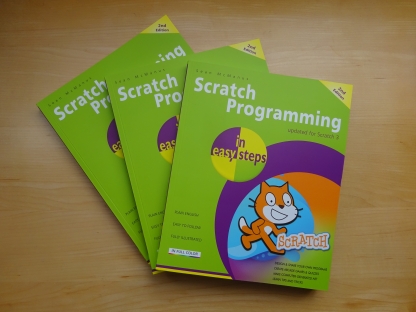
This book, now fully updated for Scratch 3, will take you from the basics of the Scratch language into the depths of its more advanced features. A great way to start programming.
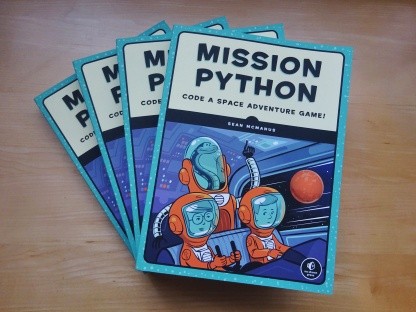
Code a space adventure game in this Python programming book published by No Starch Press.
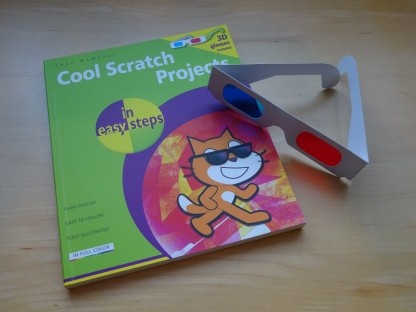
Discover how to make 3D games, create mazes, build a drum machine, make a game with cartoon animals and more!
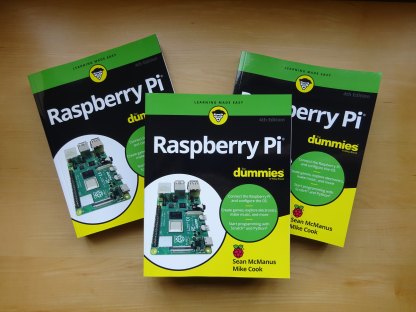
Set up your Raspberry Pi, then learn how to use the Linux command line, Scratch, Python, Sonic Pi, Minecraft and electronics projects with it.
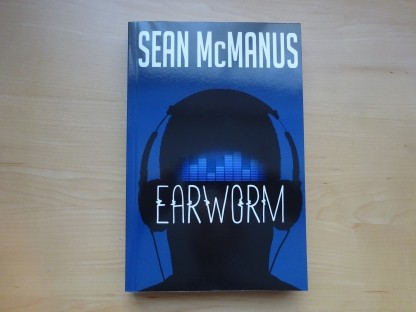
In this entertaining techno-thriller, Sean McManus takes a slice through the music industry: from the boardroom to the stage; from the studio to the record fair.